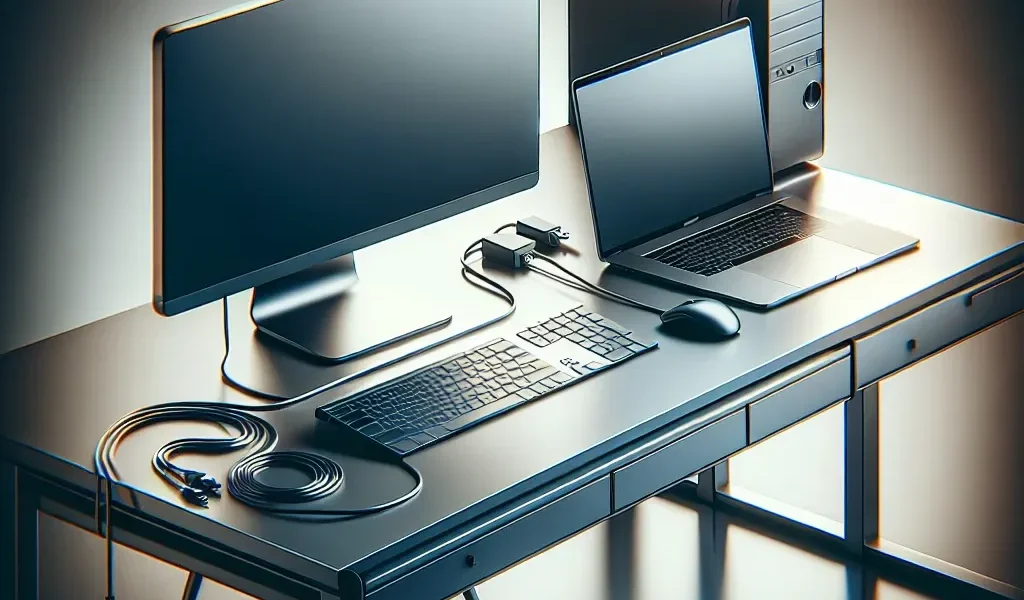Connecting a desktop to a laptop can be incredibly beneficial, whether you’re looking to share files, extend your workspace, or transfer data. Thankfully, there are numerous methods available to achieve this, ranging from wired to wireless solutions. Below, we will guide you through various methods step-by-step.
| Method | Tools Required | Technical Level |
|---|---|---|
| Ethernet Cable | CAT5e/CAT6 cable | Easy |
| Wi-Fi Network | Wireless router | Moderate |
| HomeGroup | Windows OS | Easy |
| Remote Desktop | Internet access | Advanced |
| Bluetooth | Bluetooth-enabled devices | Easy |
Connecting via Ethernet Cable
An Ethernet cable is one of the simplest ways to connect a desktop to a laptop. Follow these steps:
- Step 1: Plug one end of the Ethernet cable into the desktop and the other end into the laptop.
- Step 2: On your desktop, go to Network and Sharing Center and click on Change adapter settings.
- Step 3: Find the Ethernet connection, right-click, and select Properties.
- Step 4: Double-click on Internet Protocol Version 4 (TCP/IPv4) and choose the option to Use the following IP address.
- Step 5: Enter an IP address like 192.168.1.1 for the desktop and 192.168.1.2 for the laptop. Make sure the Subnetmask is 255.255.255.0.
- Step 6: Save the settings and restart both computers.
You should now be able to share files between your desktop and laptop through the Ethernet connection.
Connecting via Wi-Fi Network
If you prefer a wireless solution, setting up a connection through your Wi-Fi network is a straightforward method. Here is how:
- Step 1: Connect both your desktop and laptop to the same Wi-Fi network.
- Step 2: Open Network and Sharing Center on both machines.
- Step 3: Click on Change advanced sharing settings and enable Network Discovery and File and Printer Sharing.
- Step 4: Right-click on the folder you want to share, go to Properties, then to the Sharing tab, and select Share.
- Step 5: Choose the people you want to share the folder with on the network and set the permissions.
You should now be able to access shared folders between your desktop and laptop.
Using Windows HomeGroup
For users with Windows operating systems, HomeGroup is an easy way to connect multiple devices and share files. Follow these steps:
- Step 1: Go to Control Panel and click on HomeGroup.
- Step 2: Click on Create a HomeGroup and follow the prompts.
- Step 3: Once the HomeGroup is created, a password will be generated. Write it down.
- Step 4: On your laptop, go to Control Panel > HomeGroup and join the HomeGroup using the password provided.
- Step 5: Choose the libraries you want to share (Documents, Pictures, Music).
Your desktop and laptop are now connected via HomeGroup, allowing for file sharing between the devices.
Connecting via Remote Desktop
For advanced users, Remote Desktop allows you to access one computer from another over the internet. Here’s how:
- Step 1: Ensure both devices are connected to the internet.
- Step 2: On your desktop, go to System Properties, click on Remote Settings, and enable Allow Remote Connections.
- Step 3: Make note of the desktop’s IP address.
- Step 4: On your laptop, open the Remote Desktop Connection application and enter the IP address of the desktop.
- Step 5: Click Connect and input your desktop credentials to gain access.
You can now operate your desktop remotely using your laptop.
Connecting via Bluetooth
If both your desktop and laptop are Bluetooth-enabled, you can use Bluetooth to connect and share files. Here’s how:
- Step 1: Enable Bluetooth on both devices.
- Step 2: On your desktop, go to Settings > Devices > Bluetooth & other devices, and click Add Bluetooth or other device.
- Step 3: Select your laptop from the list of discoverable devices and pair the two devices by confirming the code that appears.
- Step 4: Once paired, you can use the Bluetooth File Transfer Wizard to send files between the devices.
Bluetooth offers a convenient wireless solution, especially for smaller file transfers.
Tips for Seamless Connectivity
To ensure a smooth experience when connecting your desktop to a laptop, keep the following tips in mind:
- Ensure both devices are updated with the latest software and drivers.
- Disable firewalls temporarily if you’re having trouble establishing a connection.
- Use strong passwords to secure your shared files and Remote Desktop connections.
- Keep your devices close to each other when using Bluetooth to facilitate faster data transfer.
In conclusion, connecting a desktop to a laptop is not only easy but also opens up a world of productivity. Whether through a wired Ethernet connection, Wi-Fi network, HomeGroup, Remote Desktop, or Bluetooth, each method offers its own set of advantages. Choose the method that best suits your technical comfort level and enjoy seamless connectivity.

